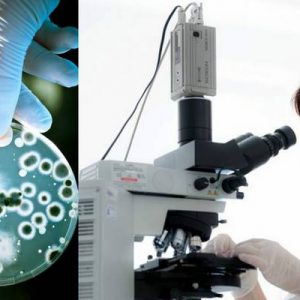Whooping cough – an acute infectious disease of the respiratory system, the main manifestation of which is long-lasting paroxysmal cough. Sick with whooping cough of people of any age – who do not have sufficient immunity after vaccination, the risk.
However, the hardest to tolerate ailment small children, they often have complications of the nervous system disorders of respiration and circulation.
Timely diagnosis of pertussis in most cases allows to avoid delaying the disease and its complications.
Why is it important to diagnose the whooping cough
Pertussis is caused by bacteria Bordetella pertussis. They allocated the patients into the environment during coughing and sneezing for almost the entire acute phase of the disease (average 20 days). These microorganisms can be combated with antibiotics, but that was the effect, the treatment should be assigned at an early stage of the disease.
Generally, in the course of pertussis is divided into four periods:
- incubation (10-14 days from infection) is the time required for the microorganism to manifest their pathogenic properties.
- prodromal or catarrhal (lasts 3-14 days) – the first signs of the disease that do not differ particularly from those with common colds, dry cough, low-grade fever;
- spasmodic (lasts 4-6 weeks) – period specific pertussis cough:
- the phase of convalescence – recovery and recovery.

In the clinical picture to diagnose whooping cough is possible only in the third period of the disease, but to start specific antibiotic therapy to stop the progression of disease, it is too late. The optimum time for treatment with antibiotics – the first week of the disease, that is the prodromal period. Here comes the first advantage of timely diagnosis of pertussis is the opportunity to conduct a specific treatment of the disease.
If pertussis sick young child (under one year), which were not made pertussis vaccination, disease will be very difficult. These kids have serious complications in the nervous, cardiovascular and respiratory system, require assistance in intensive care.
Note! According to the American center on control over infectious diseases in the world annually fall ill with whooping cough about 16 million people, about 200 thousand. cases of the disease ends in death, most dying, the babies first year of life.
In older children that have not undergone a course of vaccination, the risk of severe pertussis below, but there. Patients may develop pneumonia, atelectasis, encephalopathy, convulsions. However, if the disease is identified in a timely manner, doctors will be able to make every effort to stabilize the patient’s condition and prevent complications is the second advantage of timely diagnosis of pertussis.
In properly vaccinated children, adolescents and adults, pertussis is usually not developed, and if developed, in the form of erased or oligosymptomatic form of the disease. Such patients are no less dangerous to others than patients with obvious signs of whooping cough, because the first and the second isolated the infection in the environment by coughing. If the disease is detected and will start antibiotic therapy, the infectiousness of the patient sharply decrease, respectively, the other family members (especially small children) will not be at risk of infection, a dangerous bacteria. This is another advantage of early diagnosis of pertussis.
In some cases, shows a survey on whooping cough
Laboratory testing for pertussis is recommended that the following categories of population:
- children coughing more than 5-7 days (especially if the cough is paroxysmal in nature);
- persons who were in close contact with the patient with pertussis at home, at daycare, at school, at work;
- adults with suspected whooping cough (especially if the family has infants or if the patient is an employee of the children’s institutions).
The role of adults in the spread of pertussis among children is very high – it was proved by numerous scientific studies. In adults the disease is often protracted cold, and the cough is not characteristic for the disease traits. Therefore, many doctors and patients don’t think about whooping cough, considering it is exclusively a childhood disease. In such situations, to shed light on the true cause of illness can only be a laboratory diagnosis.
Tests for suspected pertussis
Diagnosis of pertussis is carried out by the following methods:
- bacteriology (inoculation medium);
- molecular genetic (detection of DNA of causative agent of whooping cough);
- serology (determination of the concentration in blood of specific antibodies).
For each of these studies is their timing, if they do not comply the information content and reliability of the analysis decreases significantly.
Bacteriological analysis of discharge throats to whooping cough
The optimal time for sampling for bacteriological analysis is 5-7 days of illness. If the disease lasts for 3 or more weeks – the study will be uninformative. In addition, the material should be taken prior to the start of antibiotic therapy, in another case of possible false-negative results in which the growth of microorganisms in nutrient media is not, and infectious disease is. To increase the reliability of the bacteriological tests, it is carried out twice, for example, 5 and 6 sick days.

In the laboratory the causative agent of pertussis are grown on artificial media, which differ from the natural habitat of the bacteria. It is therefore very important that the fence material the health worker was able to capture as much of the biomass of the microorganism from the pharynx of the patient. To do this, before going to the lab to be surveyed should not brush your teeth, eat, drink, rinse your mouth and throat. If this condition is violated, to hand over the material it will be possible not earlier than in 2-3 hours.
Selection for analysis of pertussis take a special swab from the posterior pharyngeal wall in an infectious diseases hospital or in the laboratory. Further, the material sown on a nutrient medium where it grows well and reproduces the causative agent of whooping cough. There is another sampling technique of mucus for research – an open Cup with a nutrient medium tray directly to the mouth of the examinee during the cough attack.
Preliminary result of bacteriological analysis will be ready 2-3 days after seeding, and final – only in 5-7 days. Bordetella pertussis on artificial media is growing very slowly, so the bacteriologist is necessary for more accurate identification of microorganisms.
The identification of the causative agent of pertussis by PCR
The material for this study is the scraping from the posterior pharyngeal wall. The efficacy of PCR in diagnosis of pertussis is highest (about 80%), false negative results are rare. Is this analysis conducted in the first 3-4 weeks of the disease, that is, when the respiratory mucosa is Bordetella pertussis.
Preparation: do not brush your teeth, eat and drink a minimum of 2-3 hours before the study, immediately before the capture of the material, you can rinse your mouth with boiled water.
Determination of the concentration of specific antibodies in the blood
Serology is used to diagnose pertussis infection in the later stages of its development – with about 3 weeks of the disease. At this time, the above-described methods are ineffective because the pathogen in the respiratory tract is gone, and the preservation of the cough is due to residual inflammatory phenomena and overstimulation of the cough center in the brain.
The course in serological diagnosis of pertussis is determined titers of antibodies to antigens of Bordetella pertussis three classes:
- immunoglobulin M – appears for 2 weeks disease;
- immunoglobulin A is synthesized from 2-3 weeks;
- immunoglobulin G detected after only 3 weeks of illness.

The primary method for serological diagnosis of whooping cough is the enzyme-linked immunosorbent assay (ELISA). The material is venous blood. Preparation for blood donation should be the same as before other analyses come to the laboratory is necessary in the morning on an empty stomach, 12 hours before the study, it is desirable to eliminate physical exertion and not to take medicines if possible.
Feature serological diagnosis of pertussis is the need in the study of paired sera, i.e., conducting two tests with an interval of 10-14 days. This tactic makes it possible to identify the increase of antibody titers, which speaks in favor of developing disease instead of immunity acquired as a result of previous pertussis or vaccination.
According to who recommendations confirmation of the presence of pertussis in non-vaccinated from this infection in children is the growing level of antibodies Ig M and Ig And to one or more antigens of Bordetella pertussis. For optimal laboratory diagnosis must simultaneously used two methods of research: bacteriological culture and serological analysis of blood.
A common blood test for whooping cough
This research method is not specific and could not confirm or refute the diagnosis of “Whooping cough”. The only purpose of this analysis is to identify the inflammatory process and correction of further examination. The doctor may suspect pertussis when a patient has the appropriate clinical picture and a high lymphocytosis and leukocytosis in the blood.
The cost of the tests for whooping cough
Prices may differ significantly in each of the cities of the Russian Federation.
In private clinics and laboratories bacteriological research on whooping cough is an average of 1.5 thousand rubles. Determination of the titer of antibodies to pertussis will cost 750-800 rubles for each immunoglobulin. Approximately the same price, and the analysis of the pharyngeal scraping on pertussis by PCR. Additional charge service for fence material: smears and scrapings – 300-400 rubles, taking venous blood – 100-150 rubles.
Where can you get tested for whooping cough
To decide which studies should go to the patient, should the doctor based on the clinical picture of the disease, age of the patient and epidemiological data (whether the contact with sick whooping cough, etc.). Therefore, you should first go to him and not go straight to the lab.
With the direction of the doctor for blood tests and swabs for pertussis in state and private medical institutions. It should be noted that not all commercial laboratories provide a full range of research on whooping cough – many people do not carry out bacteriological analysis. The results of the survey, it is necessary again to go to your doctor, only he will be able to correctly interpret the data and prescribe treatment.



